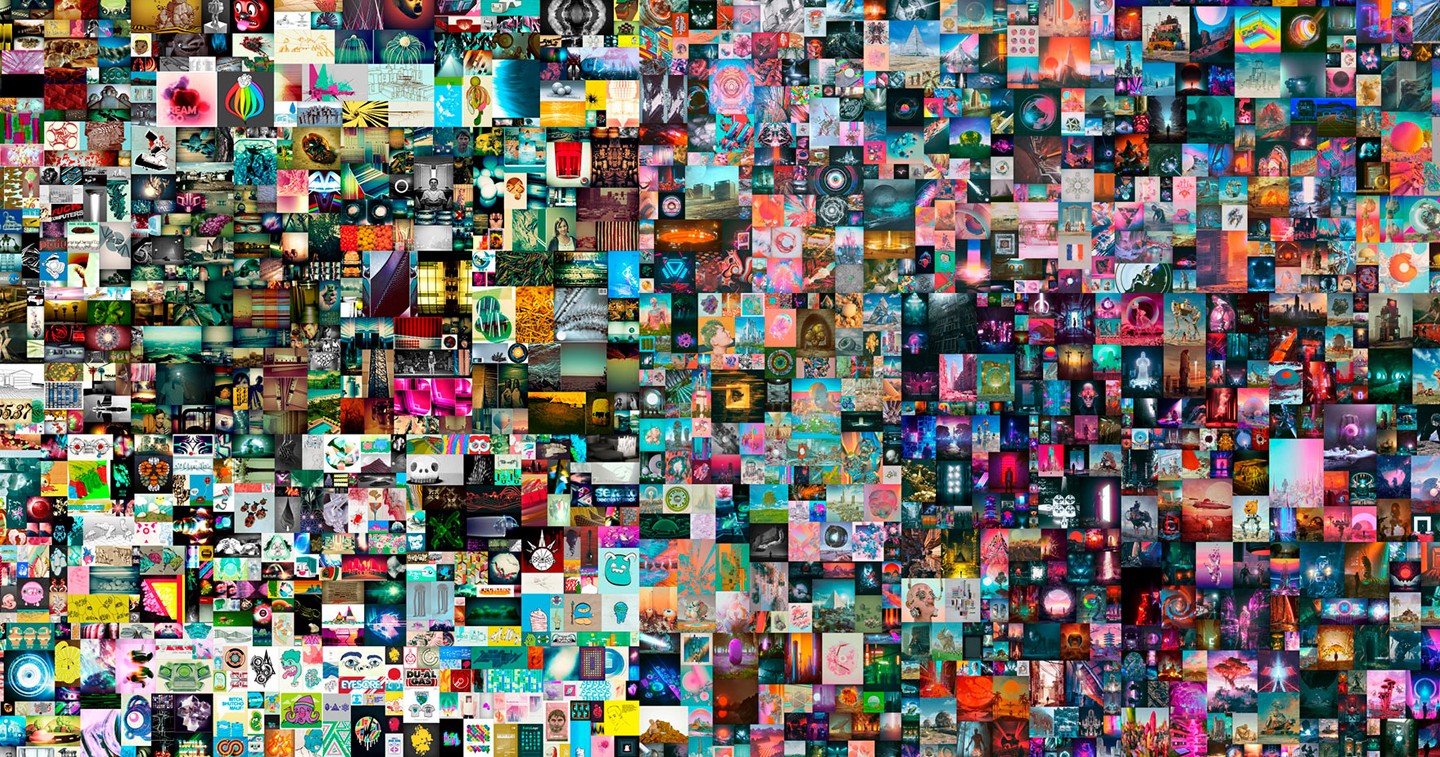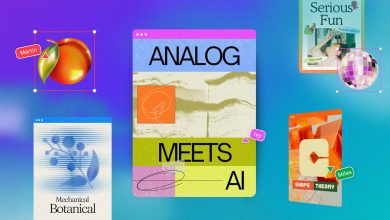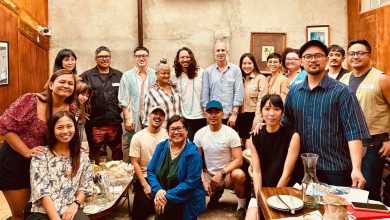MANILA, PHILIPPINES — With the rise of cryptocurrency like Bitcoin for the past few years, another term has risen in NFTs. An acronym for non-fungible tokens, an asset with unique properties that cannot be interchanged with something else. In the digital realm, NFTs are one-of-a-kind assets that can be bought and sold like other pieces of property yet have no tangible form.
In the Philippines, NFTs have also begun to take root, particularly in the form of digital art. Four of the pioneers in producing NFTs in the country just happen to be women. In this exclusive interview with adobo magazine, Caroline Dy, Vyankka, Mohini Ochangco, and Shelly Soneja talk about how they first learned about NFTs, how they began producing their own, and where they think the non-fungible tokens are headed in the future.
“The company that I work for develops blockchain games, so that’s how I initially learned about NFTs,” says Caroline Dy, Lead Technical Artist at Altitude Games. “It wasn’t until July 2020, though, that I learned how the tech could be applied to art. My friend, Gabby Dizon, introduced me to (decentralized NFT marketplace) Rarible and suggested that I mint and sell my art there.”
In the case of Vyankka, she knew of NFTs before the pandemic hit. “I knew about NFTs around 2019. I only knew collectibles like Flowerpatch, Gods Unchained, and Cryptokitties but I really didn’t understand the concept,” she bares. “I just knew they were game collectibles. In early 2020, a friend told me about cryptoart (NFT art) which I instantly became interested in, since I am an artist and didn’t really think of the idea of being able to mint your own tokens. I thought only game collectibles work.”
“I was always sharing or showing off my digital visual remix art in our group chats for a documentary project,” notes Mohini. “Then an old friend mentioned to me to try upload my work in Rarible and he said I can sell them there and would need (decentralized open-source blockchain cryptocurrency) ethereum so he instructed me to install (browser extension and token wallet) MetaMask. Then I kept the seed phrase and he sent me US $2 worth of ethereum (or ETH) in my new wallet. I didn’t understand or know what tokenizing was then.”
Like Caroline, Shelly works for Altitude Games, where she works as an Art Director. It’s through the company that she learned about NFTs. “My boss, Gabby Dizon, talked to us about Crypto Kitties which was a blockchain game where people could buy, collect, and breed virtual cats. Upon reading more about it, it totally blew my mind how revolutionary it was as it introduced the concept of digital scarcity. We first started exploring blockchain gaming in 2018. I then learned about the cryptoart scene and told myself that I needed to get involved, but my day job and all my side projects took up way too much of my time and I couldn’t add more things to my already full plate back then. So, while I was busy working on art assets for blockchain games like Battle Racers for a long while now, it was not until September 2020 that I took the plunge into making cryptoart.”
Regarding how they each got into creating their own non-fungible tokens, each has a different tale to tell. “It was a few months into the first lockdown in 2020 and I was going through a rough time coping with the stress from the pandemic,” says Caroline. “I was also feeling a bit stagnant when it came to my personal work, so I thought that getting into NFTs—or cryptoart—could help me get back to painting and creating outside of my normal game development job. The potential money could also help cover the loss of my partner’s income streams, so I figured, why not? I didn’t have much to lose and I already had a bit of ETH in my wallet (bought about a year prior when I wanted to try Axie Infinity).”
“The moment I understood about the concept, I knew instantly that I had to make my own NFTs,” full-time artist Vyankka relates. “I already have an idea of a blockchain and what it does, so I was instantly fascinated by it. I also had an experience in the traditional art world where I wasn’t given the transparency that I deserve so I know this technology will be very helpful when it comes to art collecting.”
“I really wasn’t sure what non fungible tokens were when I was already creating them,” freelance video editor Mohini shares. “I was earning from my art sales and making new friends that were kindred spirits and the trashart support crew was pretty awesome and fun. I can safely say that I wanted to keep at it because I was having fun with the other artists and making new friends from all over the world. At the same time, I was getting to share and sell my art. It was also very addictive to tokenize so I’d also keep making art so that I have something to tokenize and it had become like a ritual of sorts when the gas fees was still very minimal it was so fun to also have other artists trading tokenized art with me and I too ask others if they have some art to trade with me.”
Each of these artists has gone on to produce several works in the form of digital paintings and illustrations. With their work sold on several NFT platforms, all four have received largely positive feedback from fellow artists and collectors. In some instances, their work has even sold out online. Mohini, in fact, shared that an artist gave her the following advice after she experienced some insecurity regarding her work: “Your art is super authentic. Don’t sweat what’s popular. A unique voice is more valuable than being able to copy the in thing. You can pull stuff that resonates with you.”
“The cryptoart space has been very supportive of my art!” Shelly happily states. “When I first started out, the rush of having pieces sold so quickly really was a lot to take in. I’ve never experienced such a warm welcome from any other creative community online. When you think about online art communities, platforms like Instagram, or Facebook, or Artstation come to mind. I never thought that I’d eventually build out my biggest and most engaged following on Twitter for my art. I know that this sounds cliche, but it’s really a dream come true to not only be able to earn well on my own art, but also make a number of really good friends in the space too.”
With all four of them achieving success and gaining recognition for their work, they are also quick to tout the benefits of artists producing their own NFTs. “Aside from the global marketplace and near-endless-use cases of NFTs, I think the biggest benefit is being able to provide provenance for digital assets as everything is recorded on the blockchain,” notes Caroline.
“Being able to live as a full-time artist making your own art,” Vyankka says is the main benefit. “An artist doesn’t have to make commissions for other people, but anyone can earn directly through their art. Before NFTs, it has been extremely difficult for artists to do that. The art galleries are pretty much very selective and you’ll need some connections to be able to have a proper exposure. With the use of social media (and internet as a whole), an artist can now market himself/herself without a middleman, both locally and internationally. NFTs also act as a certificate of authenticity, so a collector doesn’t have to rely on ‘asking someone else about this artist’ but they could simply just check the address to verify. Tracking provenance becomes so easy as well, as everyone can just access the transaction details.”
The benefits for Mohini range from earning off her art to interacting with her artistic peers as evidenced by her statement that, “The main benefit is I’m earning enough to pay for my bills and support my kids by making art and learning new processes or technologies and collaborating with amazing, sweet soul geniuses artists and artisans from all parts of the world.”
For her part, though, Shelly first laments how for the longest time, digital artists have been looked down upon compared to traditional artists. She notes how despite the efforts of her fellow digital artists in video games, contributing special effects in movies and animated films, they have generally been overworked and underpaid for their efforts.
“In my case, I’ve never really felt like I belonged anywhere as a primarily digital artist who wanted to eventually make a living from original art,” Shelly continues. “Traditional art galleries won’t have me, and most people in the local scene won’t necessarily pay attention to you unless you’re already famous in some capacity, do fanart, or are associated with big name brands or companies. Locally, people don’t have much spending power when it comes to art in general (understandably so), and even if they did, they would mostly focus that money on artists that fit the categories I mentioned above.”
“I would be participating in local conventions, spending my money on rising booth costs, not to mention the costs for printing and producing various physical merchandise for selling. There would also be shipping costs too. At the end of the day, I don’t even earn enough to break even. In my previous dealings and negotiations with freelance clients pre-cryptoart, they would justify giving me lower pay because I’m from a developing country – even if the effort and skills that I provide for a project would likely be the same (or maybe even more!) than someone from a developed country.”
“NFTs have changed all that,” Shelly emphasizes. “People in the cryptoart space generally don’t care where you’re from and that in itself is empowering – no matter who you are or where you’re from, you can make your mark and earn just as much as what other people in developed countries can. It’s wonderful seeing these creators finding a space that they could call their own, being paid what is due to them, and being valued for their own vision by collectors that patronize them. Everyone from motion designers, 3D artists, pixel artists – all making money from what we love to do! We don’t have to rely on working for clients or doing commissions. Although we could still do that in the cryptoart space if we wanted to, it’s nice to not have that as the primary option.
“We finally have collectors willing to pay a premium for digital art,” she says. “The entire world is our playground and our work is accessible to a global audience that could easily purchase art without having to worry about things like shipping or creators having to source materials for physical printing or production. It is an entire paradigm shift that changes the way we think about and value digital art. As I write this, Art Fair Philippines is going online to feature digital art and NFTs! So it is clear that things are definitely changing.”
Addressing issues on royalties and proof of authenticity of their work, Shelly digs deeper, saying, “NFTs also enable royalties paid out to artists every time their art gets resold. This was something that early cryptoartists fought for and is a total game-changer – to continuously earn income from an already sold piece and it’s all automated with smart contracts. Provenance is another aspect to the tech that is also important as it shows proof of authenticity as well as being a record of ownership. This has been a struggle for the traditional art world and NFTs solve this issue.”
As for the future of NFTs, some have speculated that the so-called “NFT bubble” which has increased views as well as prices of the non-fungible tokens, our interviewees are not quite pessimistic. Caroline states, “I think NFTs are pretty much here to stay and will evolve in use as more people learn about the technology. Those who are already very deep in the more technical aspects are already finding new ways to innovate and provide more value to their collectors. As far as NFTs being in a bubble that’s ready to burst, I don’t fear it as much because I was minting works before the bubble even formed. I’m pretty much here for the long run.”
“I see NFTs being used everywhere, not only in art collecting but even in other things that need to have some kind of specific records,” Vyankka points out. “I don’t know, maybe sometime in the future we will use NFTs as a marriage certificate? Birth certificate? Tracking vaccines? Who knows? For art collecting specifically, it will be used as a general procedure for galleries and museums for tracking provenance (not necessarily buying and selling NFTs). Every physical piece will have an NFT counterpart. It will be necessary as utilizing the blockchain for recording transactions is like using a Cloud server… but they will stay there forever. It will be used by everyone just like how we use the internet. It is inevitable.”
“The “bubble” side only talks about the market side but once the media focuses on its utilities, people will realize its value. Bubble or not, I will be here and will continue to do this until probably the internet is destroyed, or there’s some new technology that’s better, or an apocalypse happened that we won’t be able to access the internet.,” she concludes.
“It’s going be a free for all to be independently creating, investing, and earning from art without middlemen taking big cuts,” Mohini notes. “Nothing wrong with it but just having the choices for things like this is, I personally think, a big, big thing. I sort of wishfully imagine like minting in various chains and then own market finds my works in like flea market style but digitally.
“The thing is, in NFTs, the main opportunity and blessing, I guess is in the possibilities and use cases for the art and technology that is existing here. So, the experimentation of use cases and the developers as artists and collaborators and experimenters and guinea pigs is kind of the whole juice of this fun adventure.”









